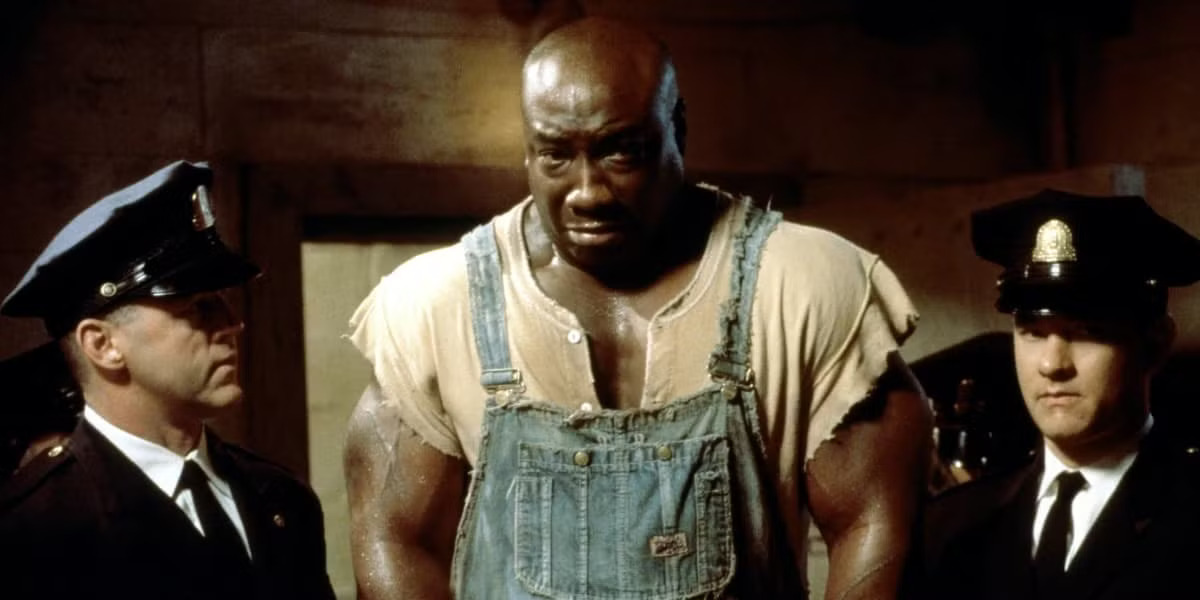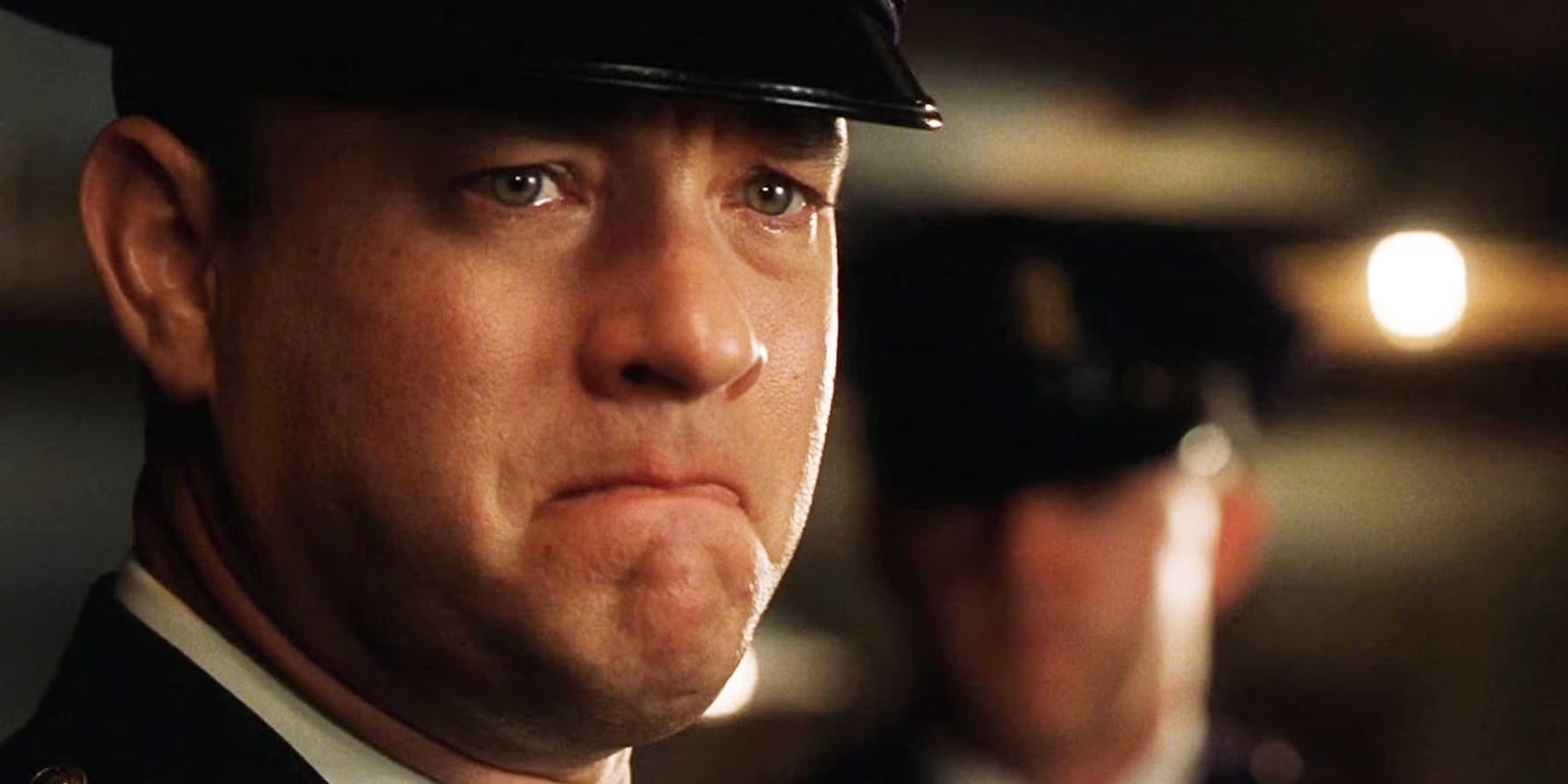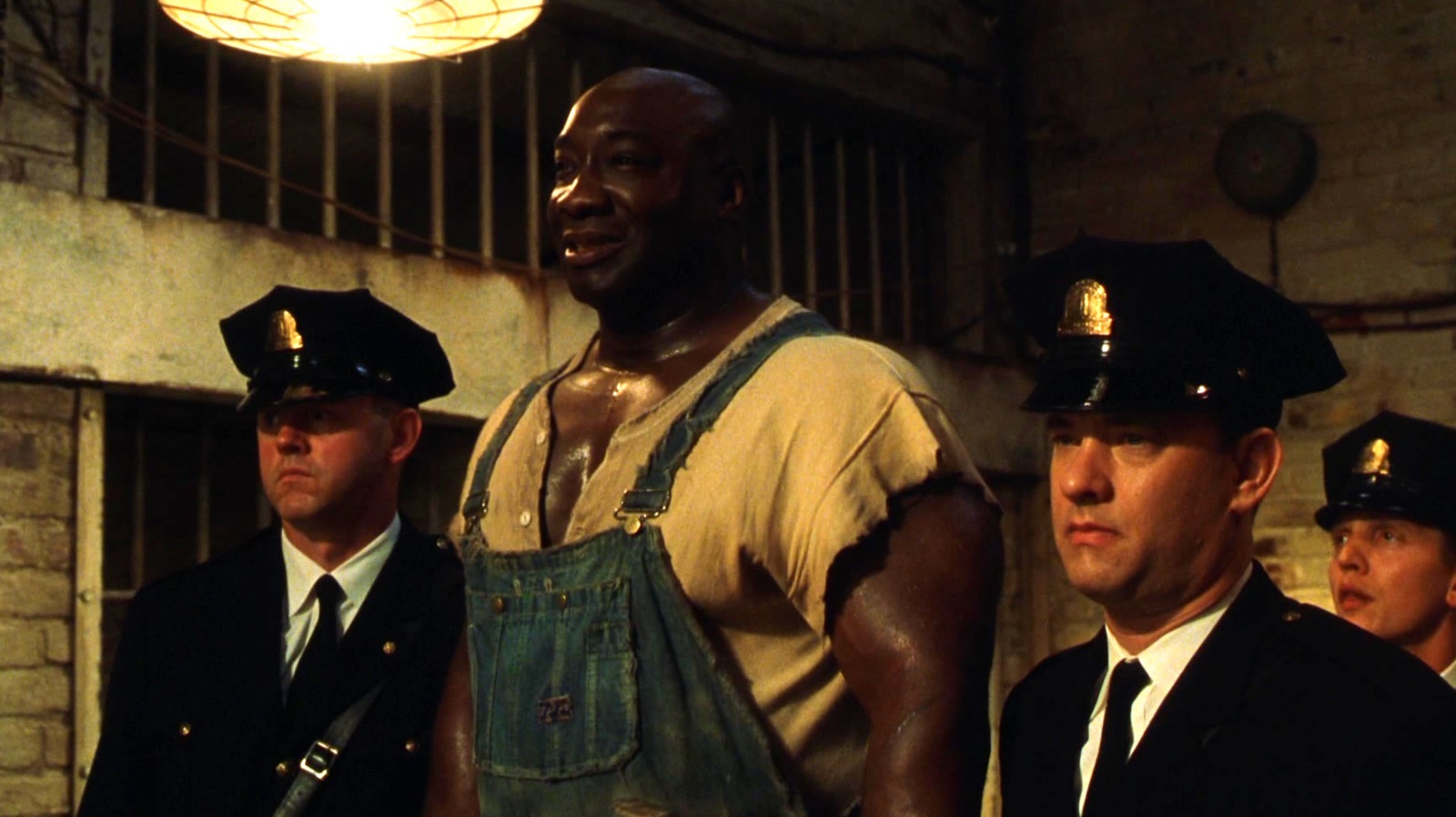Frank Darabont’s The Green Mile (1999), based on Stephen King’s novel, blends supernatural elements with an emotional prison drama. Set in 1935, it follows Paul Edgecomb (Tom Hanks), a death row prison guard, and his encounter with John Coffey (Michael Clarke Duncan), a gentle giant falsely accused of a heinous crime.
As the film unfolds, it becomes clear that Coffey possesses miraculous healing abilities, raising deeper questions about justice, fate, and morality. The film explores the clash between human cruelty and supernatural kindness, making for a deeply thought-provoking experience.
Despite his innocence, Coffey does not resist his execution. His willingness to die emphasizes the tragedy of his character and highlights his selflessness. Though physically imposing and endowed with supernatural powers, Coffey refuses to fight back, revealing his inner torment. He confesses to Paul that he is overwhelmed by the world’s cruelty and welcomes death as an escape.
This resignation makes his execution even more heartbreaking, as he is a man who chooses not to use his strength at the cost of harming others. Coffey’s acceptance of his fate is a poignant moment that cements the film’s emotional depth and reinforces the injustice he faces.

Coffey’s Final Smile and Paul’s Fate Reflect Justice Memory and Regret
In his last moments, Coffey offers a peaceful smile, making his execution even more emotional. While he previously expressed fear of dying, his final expression suggests something deeper. It is implied that he knows he has transferred some of his abilities to Paul and that his gifts will be used for good.
His smile could be a form of reassurance, both for himself and for Paul, who struggles with executing an innocent man. The knowledge that his power will live on through Paul offers a sense of closure if not justice. This moment adds a profound layer to Coffey’s character and his acceptance of fate, making it one of the film’s most memorable scenes.
After receiving Coffey’s touch, Paul experiences an unnaturally long life, paralleling the lifespan of Mr. Jingles, the mouse Coffey healed. The film suggests that Paul might live for centuries, leaving him to outlive everyone he loves. While immortality is often seen as a gift, Paul perceives it as a punishment for his role in Coffey’s execution.
His long life serves as a haunting reminder of the injustice he witnessed, making his fate just as tragic as Coffey’s. The film raises philosophical questions about life, mortality, and whether longevity without purpose is truly a blessing. Paul’s fate is not just about longevity, but about carrying the burden of memory and regret, making his extended life a poetic but painful consequence.
While the film remains faithful to King’s novel, there are some key differences. In the book, Mr. Jingles dies before Elaine, giving Paul a clearer understanding of his own fate. Additionally, the book presents Paul as writing his memoirs, whereas the movie frames his past through his memories of watching Top Hat.
These subtle changes alter the emotional weight of the ending but maintain the story’s central themes of justice and fate. The book also delves deeper into Paul’s guilt, making his perspective even more layered. The changes in adaptation reflect the challenges of bringing such a complex narrative to the screen while maintaining its emotional and thematic integrity.

Karma Justice and Sacrifice in The Green Mile’s Profound Moral Themes
A significant theme in The Green Mile is karma—characters receive consequences based on their actions. Coffey uses his powers to aid the good and punish the wicked, ensuring that corrupt individuals like Percy and Wild Bill meet fitting ends. Ironically, Coffey is the only character who does not receive justice.
His undeserved fate underscores the film’s deeper commentary on systemic injustice and moral ambiguity. The presence of karmic justice for some but not for others reinforces the idea that the world is not always fair, a notion that adds to the film’s emotional complexity. Coffey’s story highlights the imperfection of human justice and the cruel reality that sometimes good people suffer while the wicked escape unscathed.
Coffey’s character aligns with biblical messianic figures. His name itself (J.C.) hints at a Christ-like representation—an innocent man with miraculous abilities who is persecuted for a crime he didn’t commit. His choice to accept his fate rather than resist adds to this parallel.
The film subtly reinforces these religious themes, making Coffey a deeply symbolic figure of sacrifice and redemption. Coffey’s ability to absorb and transfer pain mirrors Christ’s acts of healing and salvation, strengthening this analogy. Furthermore, his execution can be seen as a metaphor for martyrdom, where an innocent man suffers for the sins of others. This theological depth adds another layer of interpretation to The Green Mile, making it a film that resonates on multiple levels.
The Green Mile received mixed reviews from critics but remains beloved by audiences. While some found its three-hour runtime excessive, others praised its emotional depth and storytelling. Roger Ebert commended its Dickensian narrative, while modern audiences continue to find its themes of injustice and redemption relevant. Actor David Morse noted that the film’s exploration of racial injustice resonates with contemporary issues, making The Green Mile a timeless and thought-provoking masterpiece.
The movie’s ability to provoke deep discussions about morality, justice, and human nature ensures its place as a cinematic classic. Even decades after its release, it remains a film that invites reflection and emotional engagement, proving that its themes are as relevant today as they were when it first premiered.



